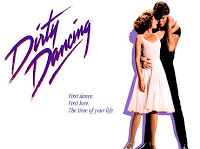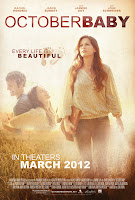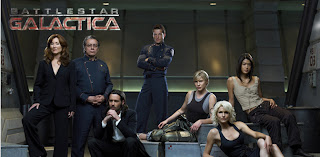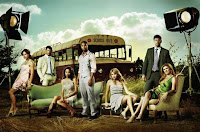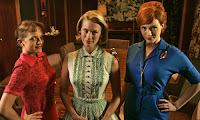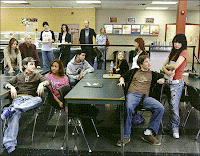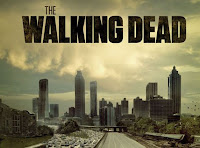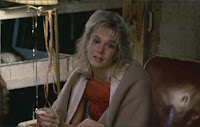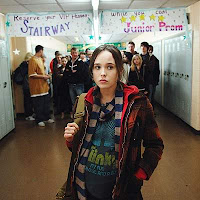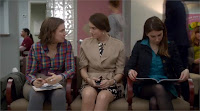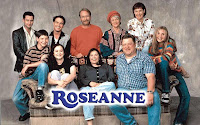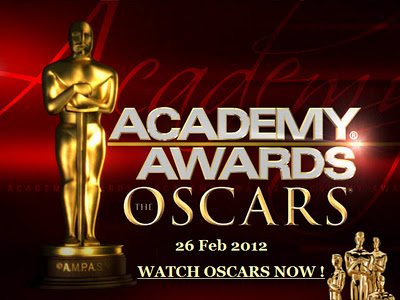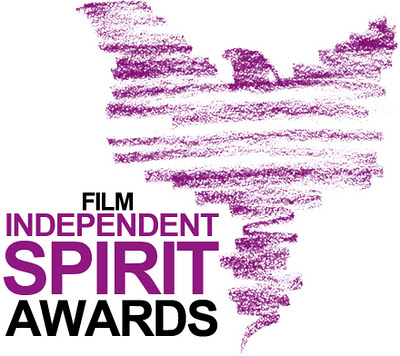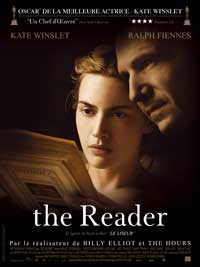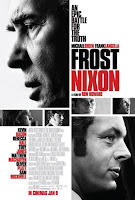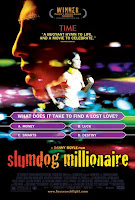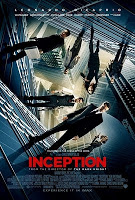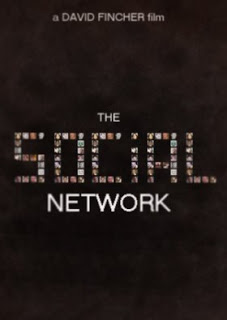(Please note that some of these excerpts contain spoilers.)
The Birdcage: Where You Can Come as You Are by Candice Frederick
That’s the thing with The Birdcage. It’s more absurd to disguise yourself as someone else rather than to unveil your true self—gay, straight, or otherwise. In other words, Armand and Albert are quite “normal,” despite other people’s projections of them. They are well-off business owners of the hottest spot around, and virtual celebrities in their glamorous hometown. Their swanky penthouse apartment would be the envy of anyone who was lucky enough to visit. They have lover’s quarrels just like anyone in any normal relationship have.
Their abnormality, so to speak, lies in the fact that they are two of the more modern gay male characters, whose sole purpose isn’t simply to enter the scene as the punch line in a mostly straight guy-focused film. Sure, they’re hilarious, their dance moves are enough to make both Beyoncé and Britney Spears blush, and you need a scalpel to remove the amount of makeup Armand has on his face (as Val points out in the movie). But, most importantly, you know their stories. They’re not just the gag.
Side by Side: To Siberia, With Love by Marian Evans
And what about the homophobic legislative changes that the press release refers to? According to the notes on YouTube, on 16 November 2011 the Saint Petersburg Parliament began to discuss the possible introduction of administrative changes, which equated homosexuality, bisexuality and transgender with pedophilia, as well as impose a fine for public discussion of LGBT issues, treating it as ‘propaganda’.
The adoption of this law will have a detrimental effect on the whole of the Russian LGBT movement, including Coming Out, the only interregional LGBT organization Russian LGBT Network, the largest grassroots LGBT organization. The Side by Side LGBT Film Festival and other LGBT groups are headquartered in St. Petersburg. The proposed amendments violate both Russian and international law, as well as the European Convention of Human Rights. Organizations behind the protest campaign are Memorial, The Human Rights Council of St. Petersburg, Civil Control, Amnesty International, Human Rights Watch as well as many others.
The Problem with GLBT Representation in True Blood and Lost Girl by Paul and Renee
When it comes to GLBT representation in the media, unless a television show is targeted specifically at the community, erasure continues to be the norm. Urban fantasy has moved from a small die hard audience to the mainstream and though we can regularly see shows about vampires, werewolves, fae, and ghosts, there are few GLBT characters and a dearth of decent representation.
HBO’s True Blood and Showcase’s Lost Girl have the most visible GLBT characters on television in North America, in terms of the urban fantasy genre. Though both shows have GLBT characters who have extremely high profiles and a reputation of being extremely GLBT friendly, there are certainly many problematic elements.
Swoon reassesses history and the demonization of minorities by dissecting the identity politics of the 1920s, juxtaposing it with anachronistic elements belonging to a different era, like dial up telephones and remote controls. The point of this cinematic device is clear, though Swoon is set in crime-ridden Chicago of the 1920s in crisp black and white, the issues at hand are timeless. Gayness is still seen as something abnormal, an intrinsic default, by many. However, the modern-day parallel is too on the nose at times. The interspersed appearance of several drag queens falls flat, for example. In the 1920s it was unclear what was worse, being a murderer or a homosexual, and Kalin delves into this social frame of mind in a chillingly astute way.
Why You Should Love Flash Forward‘s Janis Hawk by TJ Murphy
The fabulous Christine Woods as Janis Hawk is only an auxiliary character; a B story to the show, and her love life is only a B story to her B story, if you will. The fact that Janis’ romance has the emotional turmoil to guide us from first-date jitters to steamy sexual tension and then on to disappointment and abandonment in such a short span of screen time is a testament to the character’s strength.
Indeed, Janis Hawk is not a fabulous character because she is a lesbian and that lends her some sort of diversity credential. She is a fabulous character because she is a layered one. In her fast-forward, she sees herself as pregnant, getting a sonogram, enamored with love for her unborn child. This startles her because 1) she has never wanted a child and 2) in order to have a child, it would seem that there would need to be a penis involved and she remarks dryly, “I don’t like them.”
“Limit Your Exposure”: Homosexuality in the Mad Men Universe by Carrie Nelson
Despite the complete lack of visibility of gay people in the early 1960s, there is a surprisingly high amount of explicitly queer characters on Mad Men. Only one—Salvatore Romano, Sterling Cooper’s Art Director—is substantially developed, but a half dozen gay characters have passed through the Mad Men universe over the course of four seasons. All of the characters are unique, with distinct personalities and significantly different approaches to navigating same-sex desire in a hostile climate. And while Mad Men steers clear of making profound statements about the nature of gay identity in the 1960s, the characterizations it does present do have a few interesting things to say about gender identity and the ability to out oneself.
Based on this knowledge alone (and possibly the same three plotlines that tend to occur in most boarding school movies), I personally would already be gritting my teeth in preparation for ninety minutes all about Di’s introspective self-loathing and her efforts to avoid the censure of her peers, the castigation of her teachers, and the denunciation of her desires. In most cases, I wouldn’t be far off the mark: usually, the character with the same-sex crush encounters some kind of scorn from others simply for daring to find another woman attractive, which then becomes the main source of conflict.
But that isn’t the case at all for the girls of the fictitious St. Mathilda’s. Di, instead, is admired for being daring. Already a natural leader, she has even more prestige by being the favorite and having the ear of the teacher all the girls idolize.
But I’m a Cheerleader by Erin Fenner
But I’m a Cheerleader does fall into some traps. In portraying characters that are outrageous, there are lots of stereotypically flamboyant gay men. It’s less heinous than most portrayals in the mainstream, and seems to at least be trying to have a purpose. We see Mary’s son, Rock, in short shorts dancing around while ostensibly doing landscape work; living up to the most ridiculous and irritating gay stereotype. But, it’s supposed to be over-the-top to reveal the hypocrisy and absurdity of the camp. Also, while the film does a great job challenging the association of gender and sexuality, and presenting a gender spectrum, it doesn’t explore the spectrum of sexuality so much. Bisexuality is invisible.
But overall, the narrative is one that successfully challenges sexism and heteronormativity. Megan’s journey of falling in love and accepting herself looks normal compared to the antics of those who support the camp. It certainly feels more natural and provides a heart to the film that grounds it.
Growing Up Queer: Water Lilies (2007) and Tomboy (2011) by Anna Rose
Céline Sciamma’s films are ever so French. Light on dialogue, they tend to rely on lingering shots of longing glances and exquisite mise-en-scène to reveal character; loosely plotted, they leave the impression less of a story than of a series of vignettes, of tiny moments freighted with great import.
These techniques are uniquely suited to the onscreen portrayal of adolescence. It almost seems churlish to complain that Water Lilies and Tomboy lack full structural coherence, because that’s arguably intentional. Growing up, after all, is not a tightly-plotted three-act hero’s journey with clear turning points, tidy linear progression through the successive stages of personal development, and a satisfying ending. It’s a messy and confusing struggle to find a place in the world, littered with incidents that may or may not ultimately be significant (with no way to tell the difference), and most of the time the morals make no sense.
Kissing Jessica Stein by Carrie Nelson
Ten years ago, I saw Kissing Jessica Stein on a date with my first girlfriend. We liked the movie, but when we walked out of the theater, we laughed and said to each other, “Let’s not end up as dysfunctional as those two!” The irony did not escape us a few months later, when we broke up under eerily similar circumstances as Jessica and Helen, the film’s protagonists. But much like Jessica and Helen, our break-up was the start of our lifelong friendship. I’ve re-watched the film countless times throughout the last decade, and objectively, I don’t think Kissing Jessica Stein is a great movie. It’s filled with too many romantic comedy clichés, and for a film about queer women in a relationship, the film is awfully preoccupied with discussions about men. But in its best moments, it authentically depicts the awkwardness of new relationships, the confusion of unexpected sexual attraction, and the deep friendships that result from failed romances. Kissing Jessica Stein is flawed, but its sincerity and its willingness to address relationships between non-monosexual women keeps me coming back to it, over and over.
The Good, the Bad, and the Other in Lesbian RomComs by Gwendolyn Beetham
I have a confession: I love bad lesbian romantic comedies. I once had a summer where I watched little else, delighting in the bad hair, worse puns, and silly sex scenes.
Before I begin, I want to offer a point of clarification. When I say that I enjoy “bad” lesbian romantic comedies, I do so because the unfortunate truth is that there is little else (see here). But it is also true that, until we have a bigger pot to choose from, we can’t be too picky.
The bone I’d like to pick here is not regarding bad dialogue or unrealistic sex scenes, but with the depiction of race, religion, and culture in lesbian romcoms to date. And with that, another disclosure: I am not a film critic or scholar. What I am is a queer feminist academic (and self-disclosed lover of bad lesbian film). And what I’ve observed in lesbian romcoms is a noticeable pattern of “othering” when it comes to the acceptance of homosexuality.
The Kids Are All Right by Megan Kearns
The dialogue is sharp and witty yet problematic. For what I had hoped would be a feminist film, the script was littered with assloads of slut-shaming, whore-calling and homophobic F-word dropping. And while these terms do get tossed around in our society, no repercussions or backlash existed in the film; as if no social commentary was being made. Granted, not every film has to make some grandiose statement. Yet I expected better here, particularly as it was directed and co-written by a woman. Luckily, it does pass the Bechdel Test as Nic and Jules often talk to each other about their marriage or about their children.
Frida by Amber Leab
While the film certainly highlights her work as the central element of her life, romantic relationships play a major role as well. Kahlo married the older and more established Mexican muralist, Diego Rivera, when she was 21, and they had a tumultuous relationship, divorcing and remarrying, and having plenty of extra-marital affairs. Their marriage, though, is a kind of model of an artistic pairing; both understanding the other’s devotion to painting and belief in “marriage without fidelity.” Kahlo is known to have had affairs with both men and women, and the film doesn’t gloss over her bisexuality, including a scene with a woman who both Kahlo and Rivera had been sexually involved with. Early indication in the film of her admiration of men and women comes in a somewhat playful party scene, in which Kahlo steps in and wins a drinking contest between Rivera and David Alfaro Siqueiros (played by Antonio Banderas) with the prize of a dance with the lovely Modotti (Judd).
Revisiting Desert Hearts by Angie Beauchamp
It is a conventional romance, which is one of the reasons that it is so successful. As Jackie Stacey points out, “it uses the iconography of romance films: train stations, sunsets and sunrises, close-up shots, rain-drenched kisses, lakeside confessions, ‘I’ve never felt this way before’ orgasms.” It is those Hollywood conventions that conjure up shared memories of hundreds of heterosexual romances. Thus the filmmaker uses what are sometimes clichés as shortcuts to elicit particular emotions and reactions from the audience. Although the world of 1959 would certainly have been more challenging for these two lovers in the real world, the cinematic world Deitch created signals that there is an all-important happy ending coming up, a romantic Hollywood ending.
Trans-Girls and Gun Hill Road: Marking International Women’s Day For All Girls by Ileana Jiménez
Trans-girls of color need to be a part of how we mark International Women’s Day, especially in a year when the theme is “Connecting Girls, Inspiring Futures.” Often absent from our discussions about girls’ education and girls’ empowerment programs, trans-girls remain invisible to our re-imagining of a dynamic and inclusive future for all girls.
That’s why today I screened the film Gun Hill Road (2011) for my high school students taking my LGBT (lesbian, gay, bisexual, transgender) literature and film class. Winner of the Best Acting Ensemble Award at the Ashland Independent Film Awards, Gun Hill Road features the story of a Puerto Rican family in the Bronx whose patriarch, Enrique, returns from prison only to learn gradually that his son, Michael, now identifies as a young woman, Vanessa.
You don’t really have to watch this movie to know it’s going to be a real winner. Just read an interview with the director, then imagine what kind of movie a guy like this would make about a trans woman. He pulls out gems like, “I did a lot of research on transgender women, and most of them don’t look like guys in dresses.” Better yet, that quote is a response to a common query: why on earth cast Felicity Huffman? After all, Calpernia Addams appears in a brief scene, along with a couple of other transgender actresses. Why not cast Calpernia? It’s a mystery. Tucker puts forth that he did his “due diligence” upon discovering that there were “a couple transgender actresses in Hollywood”–what a shock. He also insists that the “couple of transgender actresses” he found “were closeted.” Considering that out transgender actress Calpernia Addams is clearly out, transgender, and in fact in his movie, the mind of Duncan Tucker is simply not to be understood. I will not try. Instead, let’s talk about the real reason Felicity Huffman plays this role.
I Need a Hero: Gus Van Sant’s Milk by Drew Patrick Shannon
More than a mere summary of events, Milk seeks to illuminate some of the depths of Milk’s character, which are left mostly untouched by The Times of Harvey Milk. And Penn’s performance is a marvel. But I’m left at the end of the film still not entirely knowing what made this man tick. I’m slightly in awe of him, I’m humbled by his passion, I’m drawn to his politics, I’m certainly attracted to him and can easily see myself getting talked into bed by him without much effort, but I still feel separate from him, as though his core has not been exposed. Perhaps this is more than a biopic can do, but my sense is that this is the film’s goal, and on that count it doesn’t quite deliver. The fault is neither Penn’s nor Van Sant’s nor the script’s—my guess is that capturing someone as mercurial as Harvey Milk on film is an impossibility.
I found Kelby’s story particularly poignant, given the pervasiveness of LGBT bullying today. More than any other subject profiled, Kelby expresses a love for her life and a determination not to let bullying determine her future. Though she experiences immense homophobic abuse, she refuses to hide in the closet, and she forms friendships with other outsiders so that she’s never truly alone. Kelby’s story is one of perseverance, and it’s deeply inspiring. I was also awed by Ja’Meya’s story. Her experience highlights the significant disparities in punishment that exist in our justice system. Though Ja’Meya did bring a loaded gun onto a school bus, she did not hurt anyone, and she did it out of self-defense. Yet her bullies have not been penalized for hurting her, and she faces 45 felony charges. Ja’Meya’s story is by far the most complex, and to me it was also the most upsetting – it is so painful to watch her locked away just because she was bullied and didn’t know how to handle it. Ja’Meya’s experiences show the horrifying reality that even when victims do try to defend themselves, they still end up being the ones punished.
Short Film: Tech Support by Amber Leab
Tech Support is a short film written and produced by Jenny Hagel. The film has won several awards–including Best Lesbian Short at the Hamburg International Queer Film Festival (Germany), the Audience Award at the Pittsburgh International Lesbian and Gay Film Festival, and Best Short Film at the Fresno Reel Pride LGBT Film Festival–and has been an official selection at 16 film festivals.
Everything You Need to Know About Space: 10 Reasons to Watch (and Love!) Imagine Me & You by Marcia Herring
The film realistically introduces the idea that not all women who marry men 1) stay married to them, 2) stay heterosexually identified, and 3) are happy in those marriages. I recently showed the film to a married lesbian couple, one of which had previously been in a relationship with a man. She told me it was refreshing to see that, to see her story reflected on screen. In addition to questioning her sexuality, Rachel also struggles with the expectations of her mother, and then her husband to procreate. Coop brings up the question of whether sex is better after marriage, under the expectation that it continues.
The fact is that real marriage, whether or not one of the parties involved is questioning their sexual orientation, has problems. Through Luce’s profession, we see several people, including Heck, use flowers as a kind of healing balm for the myriad troubles of life. But as Heck discovers, if something actually is wrong, flowers won’t do a damn thing.
“A Boy in a Box”: Reading Bisexuality in Daphne: The Secret Life of Daphne du Maurier by Amanda Civitello
Quite apart from any aesthetic considerations (relative austerity of sets, for example), the film’s main flaw lies in the narrative decisions made by the screenwriter: instead of telling a story about a bisexual writer, the film ultimately tries to argue that du Maurier only found happiness with women, who in turn inspired her writing. In so privileging the importance of the ‘Venetian’ (lesbian) relationships in du Maurier’s life, the film creates a false image of du Maurier’s sexuality. She made it plain that she felt as if she were “two spirits”, and sought relationships with men and women. Daphne is a missed opportunity to portray a bisexual woman during a pivotal, transitional period between the relative sexual freedom of the 1920s and 1930s and the post-World War II repressive, prudish attitude toward non-heteronormative identities that persists to this day. The film would have been far more interesting had it sought to portray du Maurier’s “boy in a box” more truthfully.
The Kids Are Terrible, The Sex Is Worse by Nino Testa
The film wasn’t just lauded as a cinematic achievement, it was also celebrated as a “positive” and “honest” representation of quotidian lesbian life in an age where gay marriage dominates any discussion of LGBT people. In addition to multiple Academy Award nominations—for acting, writing, and best picture, but not, interestingly enough, best director—the film has 93% positive reviews on rottentomatoes, so pretty much everyone who gets to decide that movies are good told us that this one was worthy of our time. Many of the reviews focus on the film’s supposedly groundbreaking “realistic” depiction of lesbians. (I guess these people have never seen The Hunger.) Eric Snider from film.com refers to the characters as “realistically portrayed.” A.O. Scott from the New York Times writes: “The performances are all close to perfect, which is to say that the imperfections of each character are precisely measured and honestly presented.” Tom Long of the Detroit News called it “one of the year’s most honest and endearing films.” (“Honest” is the key word in all of these reviews. We might want to think about what it means to call a work of fiction “honest.” To say that it is “honest” means that it confirms, in some way, our worldview; it proves something we think to be true.) And then there is this gem from The Wall Street Journal, which really sums up the self-congratulatory, progressive reviews of this film: “The basic joke here, and it’s a rich one, is that the dynamics of gay marriages differ little from those of straight marriages.” This is, of course, the ultimate compliment that the mainstream press can make about queer people—that they are just like straight people. Judging from the film, what seems to be at stake is whether or not gay married couples can be as unhappy and passive aggressive as straight married couples, thus making them more deserving of legal protections.
“All the Pieces Matter”: Queer Characters of Color on The Wire by Megan Kearns
When people talk about The Wire, usually with awe and reverie, they discuss the sharp dialogue or the nuanced characters or the statement on race and the criminal justice system. And all of that is amazing. But I think what gets lost is that people forget The Wire’s depiction of queer characters and ultimately its statement on LGBTQ rights.
The Wire portrayed complex, fully developed queer characters, something you don’t typically see in pop culture. With my absolute two favorite characters, Detective Kima Greggs and Omar Little – a black lesbian woman and a black gay man – The Wire confronted assumptions and stereotypes of heteronormativity.
Sleepaway Camp by Carrie Nelson
The shock of Sleepaway Camp’s ending relies on the cissexist assumption that one’s biological sex and gender presentation must always match. A person with a mismatched sex and gender presentation is someone to be distrusted and feared. Though the audience has identified with Peter throughout the movie, we are meant to turn on him and fear him at the end, as he’s not only a murderer – he’s a deceiver as well. But, as Tera points out, the only deception is the one in the minds of cisgender viewers who assume that Peter’s sex and gender must align in a specific, proper way. Were this not the point that the filmmakers wanted to make, they would have revealed the twist slightly earlier in the film, allowing time for the viewer to digest the information and realize that Peter is still a human being. (This kind of twist is done effectively in The Crying Game, specifically because the twist is revealed midway through the film, and the audience watches characters cope and come to terms with the reveal in an honest, sensitive way. Such sensitivity is not displayed in Sleepaway Camp.)
Pariah, in its simplest terms, is a lesbian coming-of-age story. Yet it is unlike any other lesbian coming-of-age story I have ever seen, largely because the film is not about a young woman’s initial discovery or self-acceptance of sexual identity. When we meet Alike (played masterfully by Adepero Oduye), she already is well aware of and comfortable with her sexual orientation. The film does not start from a place of Gay 101; there are no scenes where Alike expresses sexual confusion or the desire to be straight. It operates under the assumption that our heroine is out (at least to her friends and high school English teacher) and proud.
Stranger in a Queer Land: How But I’m a Cheerleader and Susan Sontag Defined My Trembling Identity by Eva Phillips
But to fully appreciate why this film is the most important piece of queer cinema for me, it’s necessary to ponder for a moment its Sontag-ian merit. That’s right, Susan Sontag, or S-Squared as nobody calls her. Even typing it I acknowledge how flimsily pretentious it seems to throw her name around–it’s like the fledgling English major who arbitrarily wedges Nietzche into every conversation, or that one guy who insists on wearing tweed and skulks in the shadows of your dinner party only to utter things like “You don’t know jazz. You can’t until you listen to Captain Beefheart. He teaches you to HEAR sound.” But Sontag, a stellar emblem of queer genius, and the extrapolations she makes on the aesthetic of “camp” are particularly fitting when unpacking Cheerleader and why, to this day, it still holds such a prized place in my heart. Sontag was a woman who had her fingers in many pies (which is not necessarily meant to be innuendo, but in her case the tawdry joke is also applicable), and her theories like that on the role of modern photography on cultural memory solidify her as one of the preeminent minds of the 20th century. She also had a longtime romance with Annie Leibovitz. And she had an affinity for bear suits.
The “Q” Stands for What? by Ashley Boyd
The Closer began with a definitive statement in the pilot episode in which a lesbian living as man is murdered by her unsuspecting girlfriend. The writers frame homophobia as a negative attribute and position Brenda as a supporter of LGBT equality. Throughout its seven seasons, the series has included gay characters, gay actors, and gay-themed storylines that include issues of homophobia, anti-gay violence, and gay activism.
The cast created a PSA about GLSEN’s Safe Space Campaign in response to the high number of gay teen suicides. Prominent gay male actors like Peter Paige (Queer as Folk) and The Closer’s own Phillip. P. Keane who portrays Buzz Watson (character’s sexuality is unknown) appear in the series. Most importantly, The Closer Creator, James Duff, is gay. The last fact makes Gavin’s introduction all the more interesting.
Women, Empowerment and LGBT Issues in Scott Pilgrim vs. The World: Strange and Nonexistent by Marla Koenigsknecht
Homosexuality is also portrayed weirdly in this movie, in the case of Wallace and Roxy. Wallace (the roommate) has the power to turn straight men around him gay, and several times does the audience see this happening. It makes being homosexual seem like a fad–which seems rather insensitive. The end of Roxy’s fight is rather odd as well. Ramona tells Scott to touch the back of Roxy’s knee, and it makes her orgasm to death (literally, she blows up). That, and when Scott says, “You had a sexy phase?” about their relationship reminds me too much of how men find lesbians hot together and makes me want to gag.
Fire: Part One of Deepa Mehta’s Elements Trilogy by Amber Leab
Depicting a lesbian relationship on film fifteen years ago proved hugely controversial, and Fire was immediately banned in Pakistan, and soon after pulled from Indian cinemas for religious insensitivity. Although the film twice passed the Indian censor board–they requested no editing, and no scenes removed–violent protests caused movie houses to stop showing the film.
Albert Nobbs Review: Exploring Constrictions of Gender & Class by Megan Kearns
I perpetually worry audiences watch period films with dangerously confining gender roles and then sit back thinking, “Phew, we’ve come so far!” Yeah, no, we so haven’t. Albert Nobbs raises so many thought-provoking questions. Why is the male gender the more “desirable” gender in society? What does it say about a society where half its population has a mere two options for their lives? How can women take charge of their own lives amidst confining gender norms? But therein lies my problem with the film. It provides no conclusions, the answers remain elusive.
It’s a slow and unassuming movie that at times moves at a methodical pace. But the more I pondered, the more I realized the film possessed many intricate layers. Throughout we see women’s perspectives and hear women’s voices. Albert Nobbs contains not one but two powerful female actors with other women in memorable supporting roles; a film rarity. Neither Albert or Hubert are defined by their gender or sexuality. They both transcend gender.
“I’m Not Running, I’m Choosing”: Pariah and Gender Performance by Megan Kearns
By the end of the film, we see Alike’s clothing change again. Adopting some of Bina’s style fused with her own – perhaps to convey that she’s learned from her heartache or it may be her acknowledgement of her sexual transformation – she wears scarves and earrings with jeans. No longer shadowing Laura and no longer conforming to her mother’s gendered expectations, Alike rejects the gender binary of butch and femme, a symbolic balance of her identity, a unison of femininity and masculinity.
